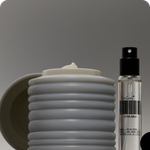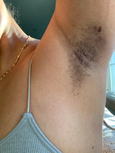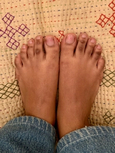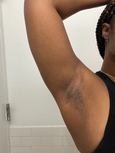A guide to using retinol, AHAs, and other sun-sensitive actives for hyperpigmentation
While you're basking in the glorious sun, you might also be dealing with hyperpigmentation and using products containing ingredients like retinol, AHAs, and BHAs to improve skin tone and fade dark spots.
These powerful ingredients can work wonders in evening out skin tone and reducing the appearance of discoloration, however, some of them can also increase the skin's sensitivity to the sun to varying degrees.
Retinol goes deeper than chemical exfoliants like AHA and BHA, making it best for hyperpigmentation caused by long-term damage, such as sun exposure. However, it also tends to increase sun sensitivity the most, make stringent sun protection necessary.
Alpha-hydroxy acids (AHAs), such as glycolic and lactic acid, gently slough off dead skin cells, revealing brighter, smoother skin beneath. While they do increase sun sensitivity, they are generally milder than retinol.
Beta-hydroxy acids (BHAs), like salicylic acid, go a step further by decongesting pores and removing bacteria, oil, and debris that can contribute to forming dark spots. Research on whether salicylic acid increases sun sensitivity is conflicting. Some studies suggest it may protect skin from sun damage, while others indicate it may increase sun sensitivity. To err on the side of caution, it's still recommended to apply sunscreen after using products containing salicylic acid.
Niacinamide, a form of vitamin B3, offers a wide range of benefits, including reducing hyperpigmentation, minimizing pores, and improving skin barrier function. Unlike retinol and lactic acid, niacinamide does not increase sun sensitivity. In fact, it can protect against UV damage and reduce inflammation caused by sun exposure.
Tips for safely using sun-sensitive ingredients:
1. Always use a broad-spectrum sunscreen with an SPF of at least 30, and reapply every 2 hours when outdoors.
2. Apply products containing retinol or AHAs in the evening, allowing your skin to benefit from their effects overnight. This is especially important for retinol, as sunlight reduces its effectiveness and increases the risk of sun damage.
3. Introduce new ingredients gradually to assess your skin's tolerance. Start with a lower concentration and gradually increase as your skin adapts.
4. Keep your skin well-hydrated, as moisturized skin is less prone to sun damage.
5. Use the "sandwich method" by applying a moisturizer before and after retinol to minimize irritation.
Discoloration
An area of skin, maybe a dot or a patch, that's darker or lighter than its base tone.
Also Called
Hyperpigmention, hypopigmentation, scar, freckles, melasma
Frequently Found On
Neck, chest, hands, arms
Related Concerns
Learn More: Discoloration

























